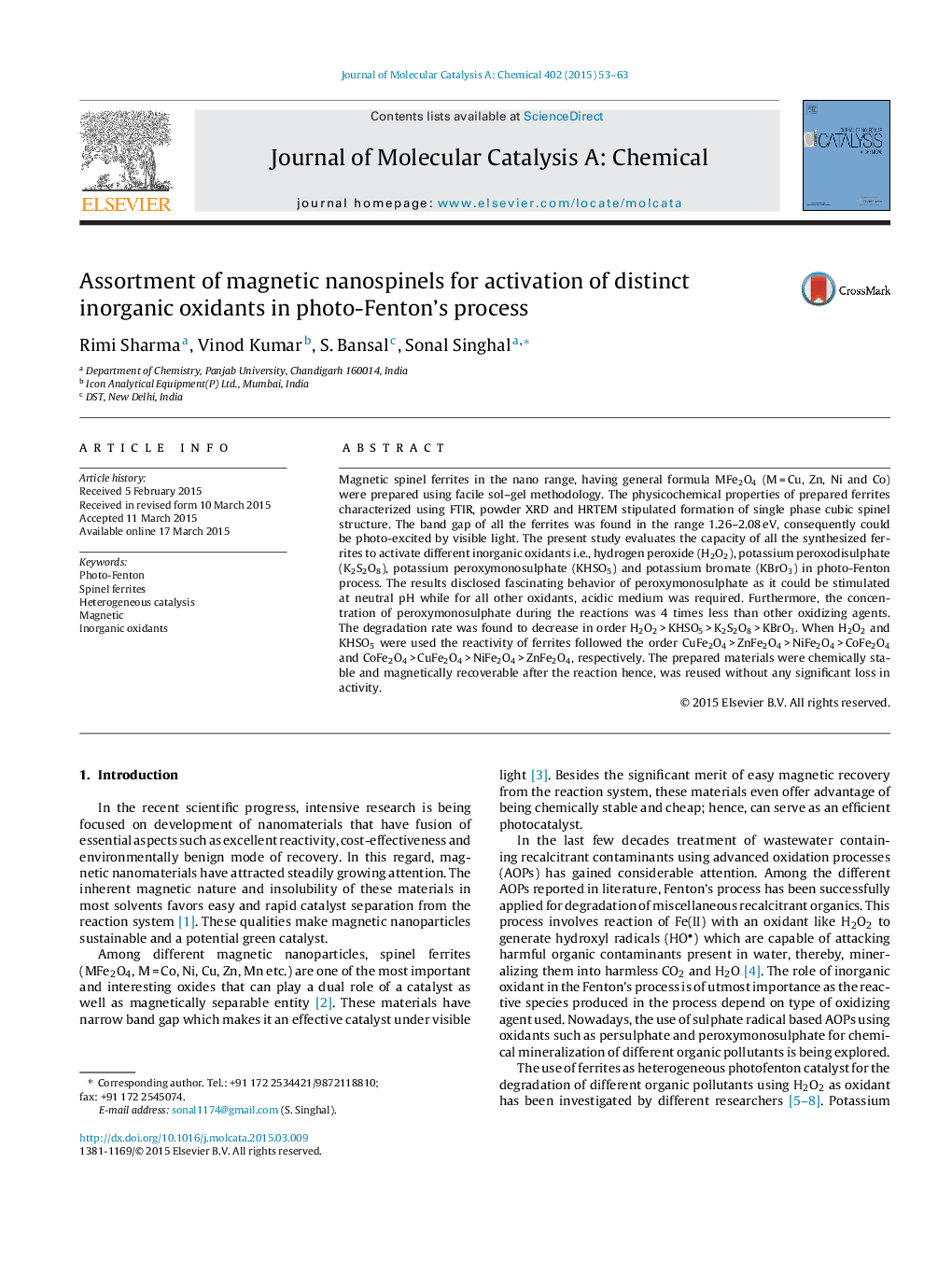| کد مقاله | کد نشریه | سال انتشار | مقاله انگلیسی | نسخه تمام متن |
|---|---|---|---|---|
| 65017 | 48378 | 2015 | 11 صفحه PDF | دانلود رایگان |
• Well characterized magnetic nanospinels were used in photo-Fenton reaction.
• Photo-Fenton activity was influenced by inorganic oxidant and type of ferrite used.
• Peroxymonosuphate was active at neutral pH even at 4 times less concentration.
• Ferrites were magnetically recoverable hence, were recycled after the reaction.
Magnetic spinel ferrites in the nano range, having general formula MFe2O4 (M = Cu, Zn, Ni and Co) were prepared using facile sol–gel methodology. The physicochemical properties of prepared ferrites characterized using FTIR, powder XRD and HRTEM stipulated formation of single phase cubic spinel structure. The band gap of all the ferrites was found in the range 1.26–2.08 eV, consequently could be photo-excited by visible light. The present study evaluates the capacity of all the synthesized ferrites to activate different inorganic oxidants i.e., hydrogen peroxide (H2O2), potassium peroxodisulphate (K2S2O8), potassium peroxymonosulphate (KHSO5) and potassium bromate (KBrO3) in photo-Fenton process. The results disclosed fascinating behavior of peroxymonosulphate as it could be stimulated at neutral pH while for all other oxidants, acidic medium was required. Furthermore, the concentration of peroxymonosulphate during the reactions was 4 times less than other oxidizing agents. The degradation rate was found to decrease in order H2O2 > KHSO5 > K2S2O8 > KBrO3. When H2O2 and KHSO5 were used the reactivity of ferrites followed the order CuFe2O4 > ZnFe2O4 > NiFe2O4 > CoFe2O4 and CoFe2O4 > CuFe2O4 > NiFe2O4 > ZnFe2O4, respectively. The prepared materials were chemically stable and magnetically recoverable after the reaction hence, was reused without any significant loss in activity.
Figure optionsDownload high-quality image (170 K)Download as PowerPoint slide
Journal: Journal of Molecular Catalysis A: Chemical - Volume 402, June 2015, Pages 53–63
